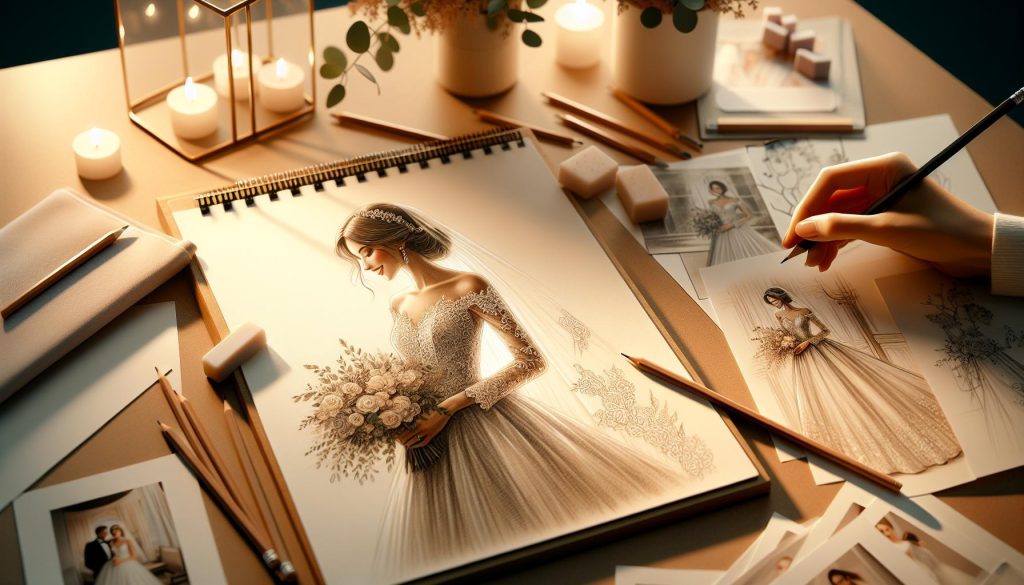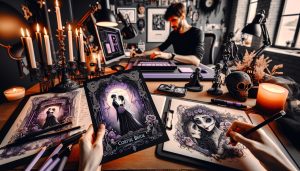Drawing a bride can be an enchanting way to celebrate one of life’s most cherished moments. Whether you’re an aspiring artist or simply looking for a unique gift for a newlyweds’ celebration, capturing the elegance and emotion of a wedding day through sketches can feel deeply fulfilling. As weddings are a tapestry of personal stories, traditions, and styles, learning how to illustrate a bride allows you to honor those special memories while exploring your creativity. This guide will take you step-by-step through various techniques and ideas to bring your bridal sketches to life, ensuring each stroke reflects the romance and beauty of this significant occasion. Embrace your artistic journey and let your imagination flourish as you discover how to immortalize the essence of a bride on paper.
How to Start with Basic Drawing Techniques
To embark on your wedding sketch art journey, mastering basic drawing techniques can transform your vision into captivating illustrations that celebrate love and commitment. Start by familiarizing yourself with fundamental skills that will serve as the groundwork for your artistic expression. Observation is key-take the time to study real brides, bridal magazines, or wedding photography. Pay attention to the intricate details of attire, posture, and emotion, as capturing these subtleties is essential for truly bringing your subjects to life.
Next, invest in quality materials that suit your style, whether it be pencils, watercolors, or digital tools. Each medium offers different possibilities for expression and texture. Begin your sketches with basic shapes to outline figures and garments. This technique allows you to establish proportions and compositions before diving into finer details. Remember to keep your hand loose and your lines light during the initial phases.
As you gain confidence, practice sketching not just the bride but also the surrounding elements that contribute to the wedding atmosphere, such as floral arrangements and venue decorations. Experimentation will lead to discovery-try various angles or poses to add dynamism to your artwork. By honing these foundational techniques, you’ll unlock a world of creativity, allowing your wedding sketches to convey not just images but heartfelt stories that celebrate the beauty of love.
Key Techniques to Start With
- Gesture Drawing: Focus on capturing movement and emotion quickly.
- Value Studies: Explore light and shadow to add depth to your work.
- Color Mixing: Understand how colors interact to create realistic skin tones and fabric hues.
Each of these techniques will enable your sketches to resonate with authenticity and artistry, setting you on the path to depicting the essence of bridal beauty in your wedding art.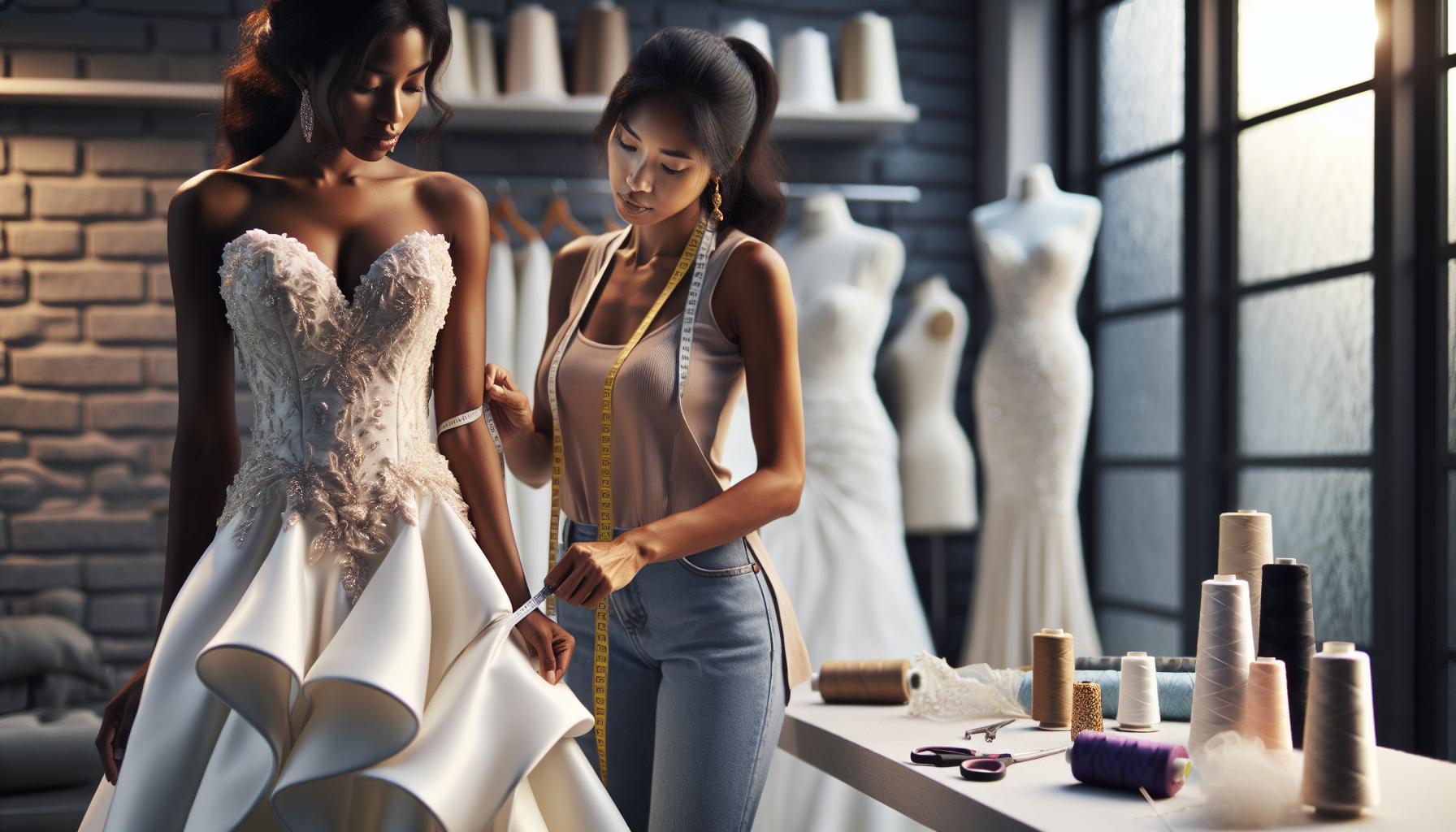
Essential Wedding Pose Inspirations for Your Sketch
Capturing the elegance and love of a wedding through your sketches can inspire joy and creativity. When it comes to portraying brides in art, poses play a crucial role in conveying emotion and story. Start by exploring various classic and contemporary poses that highlight the beauty and essence of the bride. For instance, the moment she steps into the venue, wearing her wedding gown with flowing fabric draping elegantly, can be a stunning focal point. This pose not only highlights the garment’s details but also embodies the bride’s excitement and anticipation.
Consider poses that emphasize interaction and connection. A bride laughing with her bridesmaids or sharing a tender moment with her partner during the ceremony adds a layer of warmth to your sketches. These candidly emotional moments can make your artwork resonate deeply with viewers. Look for opportunities to capture the movement of the dress as the bride walks down the aisle, or a close-up of her hand gently touching her partner’s face during the vows. These intimate gestures can transform a simple sketch into a powerful narrative.
As you develop these ideas, don’t shy away from experimenting with different angles and perspectives. A low-angle view can enhance the grandeur of the bridal gown while placing focus on the bride’s radiant expression. Meanwhile, an overhead view might capture the cascading nature of the veil or the intricate floral arrangements surrounding her. By experimenting with these varied perspectives, you can enrich your sketches and create dynamic storytelling through art.
Finally, incorporate elements of the wedding setting into your poses. Think of the lush garden backdrop or a softly lit chapel setting. Positioning the bride in harmony with these environments can evoke a sense of place and atmosphere, inviting the viewer into the scene. In capturing the spirit of these special moments, you will not only reflect the beauty of the bride but also celebrate the love that surrounds her on this joyous occasion.
Understanding Different Bride Attire Styles
The journey of sketching a bride begins with understanding the myriad styles of bridal attire that reflect personal taste, cultural heritage, and the wedding’s overall aesthetic. Each dress tells a story, with fabrics, cuts, and embellishments that inspire artists to capture the unique essence of the bride. Familiarizing yourself with different styles not only enhances your ability to illustrate accurately but also allows you to convey the emotional weight each attire carries.
Classic Styles
Traditional wedding dresses often feature timeless silhouettes like the ball gown, A-line, and sheath. The ball gown, with its full tulle skirt, is a favorite for its fairy tale charm, making it perfect for dramatic sketches that emphasize volume and elegance. A-line dresses, gradually flaring from the waist, offer a more understated grip while flattering a variety of body types. The sheath dress, fitted closely to the body, allows for a sleek, modern aesthetic that highlights the bride’s natural shape and can be depicted with clean lines and minimalistic details.
Contemporary Trends
In contrast, contemporary bridal fashions may incorporate unique elements such as asymmetrical hemlines, two-piece outfits, or even jumpsuits. These modern takes provide an exciting opportunity to explore new shapes and styles in your sketches. Consider how bold accents like cut-outs or color contrasts can add depth and interest to your art. Incorporating stylish accessories, like a dramatic cape or a floral crown, can also enrich your illustrations, truly embodying the spirit of today’s diverse wedding styles.
Cultural Attire
Bridal attire varies significantly across cultures, each bringing its own flair and significance. From the intricately embroidered saris of Indian weddings to the elegant qipaos seen in Chinese ceremonies, understanding these garments can drastically impact your approach to sketching. Pay attention to the details-such as the threadwork on a traditional dress or the array of vibrant colors used. This is where you can capture the heartfelt significance behind each piece, revealing not just the attire, but the culture and customs it represents.
By combining knowledge of these styles, your sketches will not only showcase the bride’s beauty but also tell a rich narrative of her journey and identity. Embrace each style as a canvas waiting to be brought to life, allowing your artistic expressions to celebrate the diversity and spirit of love that every bride represents.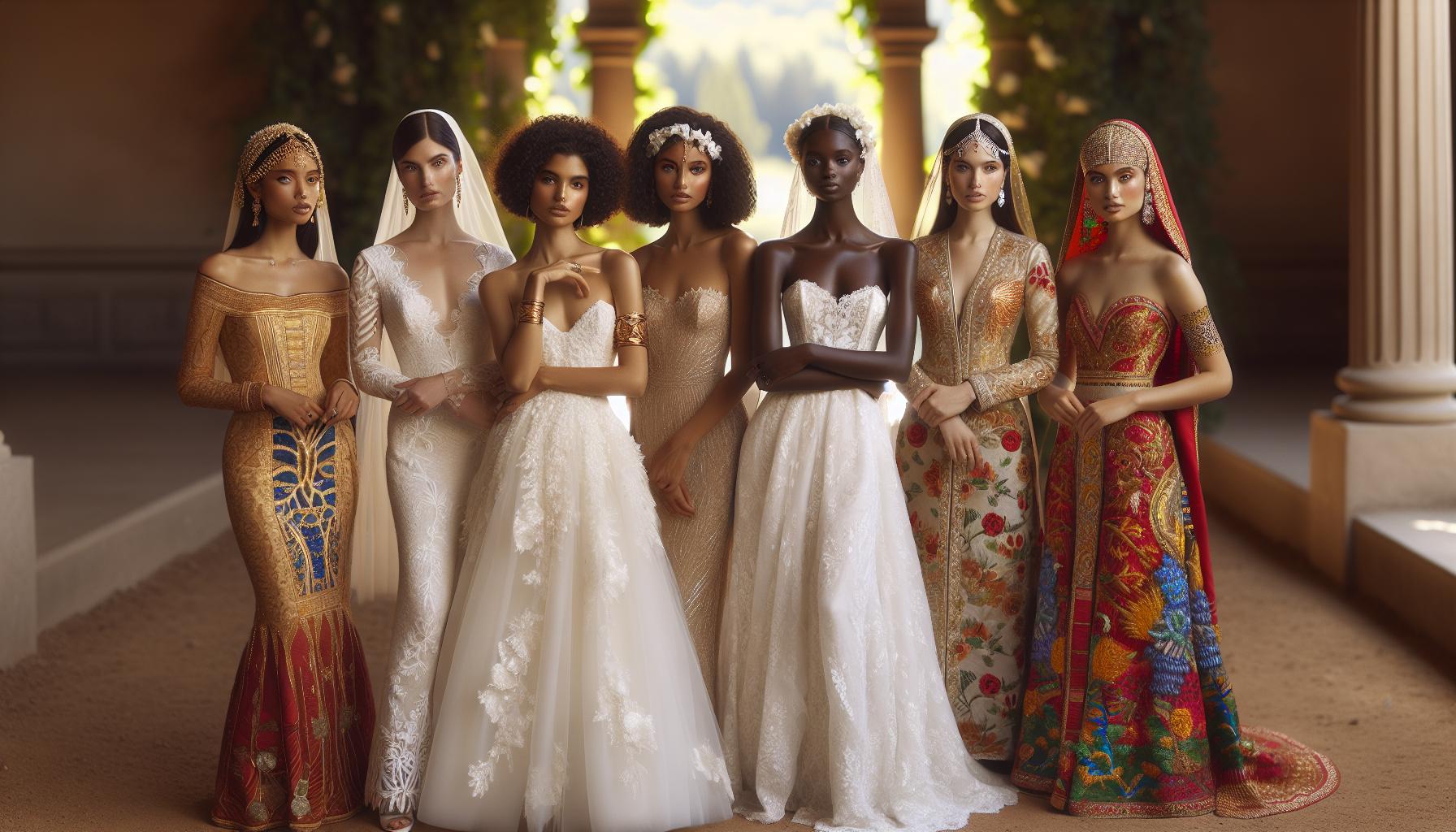
Incorporating Cultural Elements into Your Drawings
In the rich tapestry of wedding traditions, cultural elements play a vital role in expressing individuality and heritage. Incorporating these aspects into your drawings not only enhances their authenticity but also pays homage to the diverse backgrounds that brides come from. Each cultural attire conveys a story that echoes through centuries, lending depth and beauty to your artistic representations. As you sketch, consider how different fabrics, colors, and styles reflect the unique customs and values of various cultures.
One approach is to familiarize yourself with the specific cultural symbols that are significant in wedding attire. For example, Indian brides often wear vibrant, intricately embroidered saris that represent beauty and prosperity. Paying close attention to the details, such as the elaborate embroidery and the choice of colors, can add richness to your illustrations. Similarly, in Chinese weddings, the qipao stands out for its elegance and is typically adorned with motifs symbolizing love and happiness. Capturing these delicate elements will create a more engaging representation that resonates with the viewer.
Another important cultural consideration is the significance of accessories, which vary widely across different traditions. Items like the Indian maang tikka or the Latin American mantilla serve as focal points that enrich the drawing while telling a deeper story. Incorporate these accessories thoughtfully, highlighting their importance in enhancing the bride’s overall look and cultural narrative. By weaving these elements seamlessly into your sketches, you will not only showcase the bride’s beauty but also convey a powerful message of cultural pride and heritage.
Ultimately, the journey of sketching a bride becomes a celebration of diversity. Embrace this opportunity to educate yourself about various cultural influences, letting them inform your artistic style. As you capture these rich narratives on paper, your sketches will blossom, reflecting not just fashion, but the profound emotions and customs that weddings embody across the globe. Let your art be a canvas that honors the unique stories of love and unity that cultural elements represent.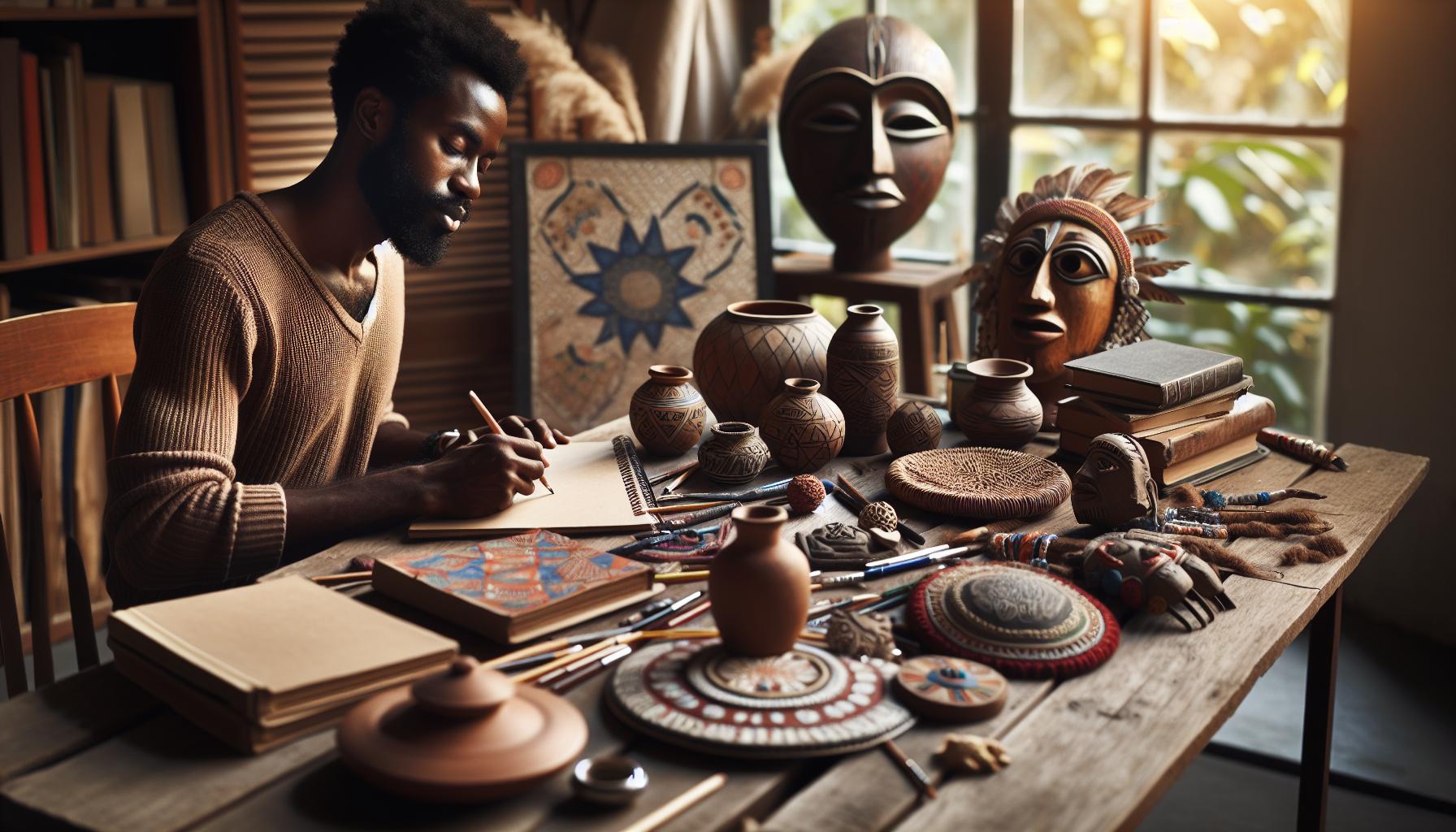
Sketching Facial Features: Tips for Capturing Emotion
Capturing the delicate emotions that radiate from a bride on her wedding day is one of the most rewarding aspects of sketching. The facial features-particularly the eyes, mouth, and subtle expressions-hold the key to conveying the joy, love, and excitement that accompany this monumental occasion. By focusing on these elements, artists can breathe life into their drawings, making them resonate with the profound feelings associated with weddings.
To begin, pay close attention to the eyes. They are often described as the windows to the soul, and this is particularly true in wedding sketches. When sketching the bride’s eyes, consider their shape and the emotions they express. Are they reflecting happiness with a slight squint, or are they wide with wonder? Adding highlights to the eyes can enhance their liveliness and capture the sparkle typical of a bride anticipating her moment. Practice varying the brow position to further convey different emotions; a gentle arch might illustrate excitement, while a relaxed brow can depict calmness.
Next, focus on the mouth and its expressions. A subtle smile can communicate a wealth of emotions, from joy to shyness. It’s essential to capture the soft curve of the lips and the way they might quirk in moments of laughter. You can also draw inspiration from candid photographs of brides in joyful moments-often, the best expressions are unposed. Highlight any specific features, such as a dimple or fullness, that are unique to the bride, bringing personalization to your artwork.
Lastly, consider the facial structure and how light and shadow fall on the bride’s face. The interplay of light can dramatically impact the mood conveyed in your sketches. Use soft shading to create depth and dimension, accentuating features like cheekbones and the outline of the jaw. Experiment with different pencil techniques, such as cross-hatching or stippling, to find what best captures the serene yet joyful energy of a bride on her special day. As you sketch, remember that the key to capturing emotion lies not only in the details but also in the authentic expressions that tell a heartfelt story.
By honing in on these elements, artists can create sketches that do more than just depict a bride-they celebrate the beautiful moments of emotion that wedding days encapsulate. Each drawing has the potential to tell a love story, reflecting the excitement and romance that accompany a couple’s journey, making the art of sketching brides not only a practice in technique but also an exploration of the profound emotions of love and commitment.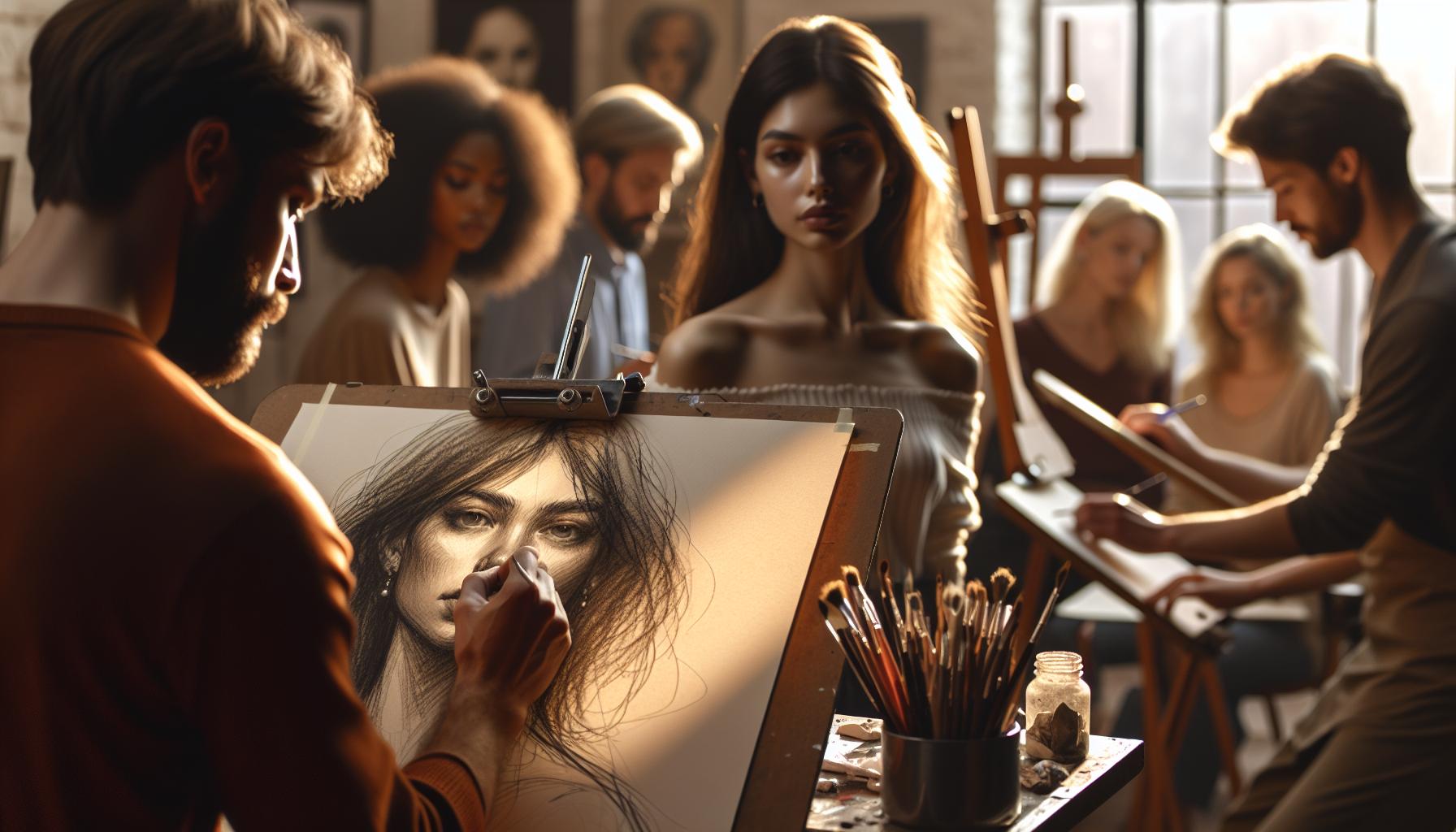
Adding Wedding Accessories for a Polished Look
Every bride deserves to shine on her wedding day, and adding the perfect accessories can elevate your sketches from beautiful to breathtaking. Accessories encapsulate the essence of personal style, making each bridal portrait unique. Whether it’s the delicate shimmer of a tiara or the romantic drape of a veil, the right details can bring depth and character to your artistic representation.
To begin, focus on essential elements such as headpieces. These can range from classic tiaras and floral crowns to contemporary hairpins and combs. When sketching, consider the material and how it interacts with light. A tiara, for instance, can reflect light beautifully, so gentle highlights can enhance its sparkle. Floral crowns often feature greenery, which adds texture; capturing this requires careful observation of the shapes and colors in the flowers and leaves. Pay attention to how these accessories frame the bride’s face, as this will guide your overall composition.
Another key accessory is the veil. Varying in length and style, veils can add an ethereal quality to your drawing. When illustrating a veil, consider how it billows in the wind or cascades down the bride’s back. Soft, flowing lines can capture the veil’s delicacy and movement, lending a whimsical feel that complements the bride’s elegance. Consider shading to convey transparency and depth-this will allow the veil to appear both light and substantial.
Finally, don’t overlook the significance of jewelry and bouquets. A necklace can serve as a focal point, drawing the viewer’s eye, while earrings can frame the face beautifully. Sketch these details with a focus on the material (such as gold, silver, or gemstones) to portray their shine effectively. Bouquets, on the other hand, not only add color but also tell a story of the couple’s theme or personal aesthetic. Capture the arrangement of flowers, playing with diverse shapes and color gradients to add vibrancy to your artwork.
Incorporating these accessories with attention to detail not only polishes your sketches but also elevates the narrative of the dress, capturing the essence of love, joy, and individuality that each bride brings to her special day. Each accessory contributes a layer of emotion and style, ultimately portraying the unique love story that unfolds on that unforgettable occasion.
Creating Dynamic Composition in Wedding Art
Creating a captivating wedding sketch involves more than just rendering the bride; it’s an art of arranging elements that draw the viewer into a narrative of love and celebration. A dynamic composition can breathe life into your artwork, allowing each aspect to harmonize beautifully. Consider the flow of your drawing, ensuring that the eye is naturally led across the scene. By strategically placing the bride within her surroundings-perhaps in a lush garden or a grand hall-you invite viewers to become storytellers, engaging them with the emotion encapsulated in the setting.
To enhance your composition, think about the principles of balance and symmetry. Position the bride off-center to create a sense of movement and interest, allowing supporting elements like floral arrangements or guests to frame her elegantly. Utilizing overlapping shapes can also add depth; this technique ensures that various layers of your sketch speak to one another. Experiment with varying sizes and perspectives; a close-up of the bride’s radiant smile juxtaposed with the softly blurred background can evoke an intimate mood while highlighting her joy.
Additionally, consider incorporating negative space judiciously. Embracing areas of emptiness can give breathing room to your artwork, making details like the lace of her gown or the shimmer of her jewelry stand out even more. As you refine your work, remember to ask yourself: how does each element contribute to the overall story? The colors you choose, the textures you depict, and the positioning of every detail work together to create a cohesive visual narrative.
Finally, keep in mind that inspiration can strike from any source. Whether it’s a memorable wedding photo or a personal experience related to weddings, harness these moments to guide your artistic direction. With each stroke of your pencil, embrace the joy and beauty of weddings while confidently crafting compositions that celebrate the love stories they represent.
Utilizing Color Theory for Wedding Sketches
Understanding color theory is fundamental for creating visually captivating wedding sketches that resonate emotionally with viewers. Choosing the right colors can evoke feelings of romance, joy, and intimacy-qualities intrinsic to weddings. When sketching a bride, consider how colors influence the mood and convey the thematic essence of the celebration. For instance, soft pastels can impart a delicate and ethereal quality to your artwork, while bolder, saturated hues may invoke excitement and exuberance.
Understanding Color Relationships
Applying basic color relationships can enhance your sketch. Utilize the color wheel to explore complementary colors, which are opposite each other on the wheel. For example, if your bride is wearing a pale pink gown, drawing in teal accents can create a striking contrast that draws attention to her. Alternatively, employing analogous colors-those that sit next to each other on the wheel, such as blue, teal, and green-can create a harmonious and serene look perfect for elegant weddings.
Symbolism of Colors
Colors often carry deeper meanings and cultural significance, especially in the context of weddings. Here’s a brief list to inspire your palette choices:
- White: Purity and innocence, common in traditional wedding gowns.
- Pink: Love and romance, often used for flowers and decorations.
- Red: Passion and celebration, frequently featured in various cultures.
- Gold: Luxury and prosperity, perfect for accents and detailing.
- Blue: Calmness and fidelity, widely used in fabrics and themes.
Using these color insights can help you create layers of meaning in your artwork, allowing each choice to deepen the viewer’s understanding of the portrayed love story.
Experimenting with Shades and Tints
Don’t hesitate to experiment with various shades (darker versions) and tints (lighter versions) of your chosen colors. This technique can add depth and dimension to your illustrations. For example, a bride’s veil might be a soft white with delicate gray undertones, emphasizing its ethereal quality against the bride’s bright gown. Similarly, adding lighter tints of a floral arrangement’s primary hue can bring a fresh and vibrant feel to your sketch without overwhelming the composition.
By thoughtfully integrating color theory into your wedding sketches, you create not only an engaging visual narrative but also a joyful celebration of love. The right palette allows your artwork to transcend mere representation, inviting viewers to feel the essence of the special day.
Exploring Textures: Fabrics and Floral Elements
Capturing the beauty of a bride on her wedding day involves not only illustrating her attire but also rendering the textures of fabrics and floral elements that surround her. These details infuse life and richness into your sketches, allowing you to create a scene that resonates with the essence of the celebration. Consider the elegant interplay of textures-the soft flow of silk, the delicate lace, or the vibrant, layered petals of flowers-and how they can enhance the overall composition and emotion of your artwork.
Fabrics and Their Characteristics
Different fabrics convey specific moods and can be depicted using varied techniques. For example, the luxurious drape of satin can be illustrated with smooth, flowing lines that emphasize its sheen, while the intricate patterns of lace might require careful detailing to capture its complexity. To create a sense of volume and depth in your drawing, consider using shading techniques:
- Satin: Use soft gradients to showcase its reflective quality.
- Lace: Employ fine, detailed lines to represent the lace’s intricate patterns, layering them to create a sense of transparency.
- Tulle: Light and airy, tulle can be illustrated with light strokes and a gentle, floating appearance to suggest movement.
Pay attention to the interplay of light and shadow on these fabrics to enhance realism, making your bride come alive on the page.
Floral Elements: Adding Vibrancy
The flowers a bride chooses can also speak volumes about her style and the theme of the wedding. When incorporating floral designs into your sketches, focus on not only the flowers’ colors but also their textures. Consider the unique features of each kind of flower:
- Roses: Their velvety petals can be showcased with soft lines, using shading to suggest fullness.
- Lilies: The smooth, elegant curves of their petals can be highlighted with gentle contouring.
- Succulents: Show their unique shapes and layers with strong outlines and subtle tonal variations.
Blending these floral elements with the bride’s attire can create a harmonious composition that tells a story about the wedding’s ambiance. For instance, if the bride’s bouquet features a rich array of colors, incorporating those tones into her gown or accessories can create a sense of unity in your artwork.
In conclusion, by thoughtfully exploring and rendering fabrics and floral elements, your wedding sketches will not only depict the bride beautifully but also celebrate the joyous occasion in a way that invites viewers to appreciate the intricate details and heartfelt emotions of the day. Emulate the textures that bring these moments to life, and you’ll create captivating artistry that encapsulates the romance of weddings.
Advanced Techniques for Realistic Bridal Portraits
Capturing the essence of a bridal portrait requires not only technical skill but also a deep understanding of the emotions and intricacies of the wedding day. The goal is to breathe life into your artwork, so that viewers can almost feel the joy and love radiating from the bride. One effective way to achieve this is through the strategic use of lighting, which can dramatically alter the mood and depth of your sketches. By paying close attention to how light interacts with fabrics and features, you can create a sense of realism that draws the viewer in.
Creating Depth with Shadows
Utilize shadows to enhance the three-dimensional quality of your portraits. When sketching, consider the light source; whether it’s the soft glow of sunlight or the warm flicker of candlelight, this will influence how you render shadows on the bride’s attire and skin. Employ a soft pencil or charcoal for gradual shading, and layer these shadows to avoid harsh lines that can detract from the softness of the subject.
- Undercutting Details: Softly shade areas beneath the chin, along the neckline, and under the arms to create a natural depth.
- Gradient Techniques: Use a series of gradients to depict how light dances across fabrics, such as the shimmering effect on satin dresses. This not only adds realism but also gives life to the fabric’s flow.
Highlighting Features and Accessory Details
When focusing on facial features, remember that the eyes are windows to the soul; they should reflect the bride’s inner happiness. Capture the sparkle in her eyes by leaving small, white highlights that simulate the reflection of light. Additionally, using fine lines and careful detailing can bring her wedding accessories, such as tiaras, veils, or earrings, into sharp focus, complementing her overall look.
- Reflections in Jewelry: Highlight areas of engagement rings and earrings to make them appear lustrous and significant. Use tiny dots of white for sparkle against a darker base.
- Veil Rendering: For bridal veils, employ translucent lines and light strokes to convey ethereality, suggesting movement as it flows around the bride.
As you work, remember that every stroke can enhance the narrative of your art. Whether it’s capturing the bride’s excitement or the serene moments of reflection, your sketches can tell stories that words may fail to express. Infuse your illustrations with love and elegance, celebrating the beauty of each unique wedding day as you showcase the bride in all her glory.
Capturing the Atmosphere: Setting the Scene
Capturing the essence of a wedding scene goes far beyond simply portraying the bride; it involves weaving together the myriad elements that create the unique atmosphere of a joyous celebration. As you step into this creative endeavor, imagine the emotions, scents, and sounds that envelop such a significant day. Setting the scene in your sketches allows the viewer to feel as if they are part of the celebration, experiencing the love and joy that radiates from each detail.
To illustrate the atmosphere effectively, think about the venue and its decor. Whether it’s a lush garden adorned with florals or a grand hall embellished with chandeliers, ensure your background complements the bride’s elegance. Use broad strokes to create sweeping views of the setting, framing the bride within her surroundings. Pay attention to how lighting interacts with different elements; the golden hues of the setting sun or soft light from twinkling fairy lights can dramatically enhance the mood. You might depict the soft shadows cast by trees or the delicate glow of candles on tables, making the scene feel alive and inviting.
Additionally, consider the little touches that contribute to the wedding’s personality-like floral arrangements, table settings, or even the attire of guests. Including these elements not only enriches the narrative but also allows for a greater exploration of textures and colors, enhancing the overall aesthetics of your artwork. For instance, sketching lavish floral bouquets with intricate petal details or portraying guests in fashionable attire can add layers of charm and relatability to your illustrations. Be sure to use a variety of line weights and filling techniques to communicate the different textures, whether it’s the smooth finish of satin or the velvety softness of roses.
As you create your scene, remember to maintain an emotional focus. Whether it’s the bride’s joyful expression, the proud gazes of family members, or the enthusiastic laughter of friends, capturing these moments will heighten the emotional impact of your art. Infusing your sketches with these heartfelt interactions can truly reflect the spirit of the day, transforming simple visuals into a vivid celebration of love. Each piece you create tells a story, allowing your audience to feel the magic of the moment and the beauty of the wedding day.
Sharing Your Bridal Art: Social Media Tips
Sharing your bridal sketches on social media can be a delightful way to connect with fellow artists, couples, and those who appreciate the beauty of wedding celebrations. With the right approach, you can turn your art into a vibrant narrative that not only showcases your talent but also resonates emotionally with others. Here are some valuable strategies to enhance your social media presence and create meaningful interactions around your bridal art.
Start by choosing the right platform that aligns with your creative expression. Instagram and Pinterest, for instance, are visually-driven, making them ideal for sharing art. Curate a cohesive aesthetic for your page, focusing on a theme that reflects your style. Use hashtags like #WeddingArt, #BridalSketch, and #WeddingInspiration to reach a broader audience. Additionally, consider joining communities or groups related to wedding planning and art to expand your network and find fellow enthusiasts who will appreciate your work.
Engagement is key in the social media realm. Share your sketches along with stories or insights about each piece, revealing the inspiration behind it or details about the wedding theme or culture it represents. This storytelling aspect can create a personal connection with your audience. Encourage interaction by asking questions or inviting followers to share their thoughts on wedding styles or elements they love. You can post behind-the-scenes content of your drawing process, setting the stage for future sketches and fostering a sense of inclusion in your artistic journey.
Moreover, don’t shy away from collaborating with wedding vendors or photographers to amplify your reach. Partnering with them to showcase your art in real weddings can add value to your content while cross-promoting your talents. Consider featuring your sketches in vendor posts or engaging in art challenges or contests, which can provide great exposure and foster a supportive community around bridal art.
Lastly, keep your postings consistent and authentic. Create a content calendar that includes a mix of finished sketches, progress shots, and engagement posts to maintain interest. Share both triumphs and challenges of being an artist, creating an approachable persona that resonates with others. Remember, your art is not just about showcasing skills; it’s about sharing a love story-an invitation for others to partake in the magic of weddings through your unique lens.
Frequently asked questions
Q: What are some beginner-friendly tips for sketching a bride?
A: Start by practicing basic shapes and proportions to build your foundation. Use simple outlines to define the bride’s posture and attire. Focus on capturing the flow of the dress and the elegance of her pose. Consider exploring different bridal styles for variety.
Q: How can I incorporate cultural elements into my bride sketches?
A: Research specific cultural wedding attire and accessories that represent various traditions. Incorporating elements like henna designs, headpieces, or unique fabrics can enrich your sketches. Refer to the section on “Incorporating Cultural Elements into Your Drawings” for inspiration.
Q: What materials are best for drawing bridal sketches?
A: High-quality pencils, fine liners, and markers are ideal for detailed sketches. For added dimension, consider using colored pencils or watercolors. Experimenting with different paper textures can enhance the elegance of your bridal art.
Q: How can I capture the bride’s facial expressions in my sketches?
A: To capture emotion, focus on the eyes and mouth, using light shading to add depth. Practicing expressions from photographs can help. Apply techniques from the “Sketching Facial Features” section for better results.
Q: What poses work best for sketching brides?
A: Dynamic poses such as the bride holding her bouquet or looking over her shoulder often convey elegance. Explore traditional poses and those that reflect the bride’s personality, ensuring a balance of posture and emotional expression.
Q: How do different wedding accessories enhance my bride sketches?
A: Accessories like veils, jewelry, and bouquets can add character to your sketches. Experiment with their placement and detail to enhance focal areas, creating a polished and visually appealing composition. Refer to “Adding Wedding Accessories for a Polished Look” for guidance.
Q: What are advanced techniques for realistic bridal portraits?
A: Techniques such as layering and blending colors create depth and realism. Focus on skin tones and the texture of fabrics while engaging with principles discussed in “Advanced Techniques for Realistic Bridal Portraits” to elevate your artwork.
Q: How can I effectively share my bridal sketches on social media?
A: Use natural lighting when photographing your sketches to enhance visibility. Incorporate relevant hashtags to reach a wider audience and consider sharing stories about your artistic process in accordance with our social media tips.
The Way Forward
As you embark on your artistic journey to draw a bride, remember that every sketch is a celebration of love and individuality. Don’t let uncertainty hold you back; grab your pencil and start creating breathtaking designs today! For more inspiration, check out our related guides on “Bridal Hairstyles” and “Wedding Dress Sketches” to elevate your artistic skills even further.
Feeling inspired? Join our community for weekly tips and exclusive resources that make wedding planning feel effortless. Have questions or need clarification on techniques? Drop a comment below-we’d love to help! Keep exploring our site for comprehensive advice on everything from ceremony details to vendor coordination, ensuring your artistic vision beautifully complements the magical moments of any wedding. Your creative journey begins now, so let’s make it unforgettable together!

